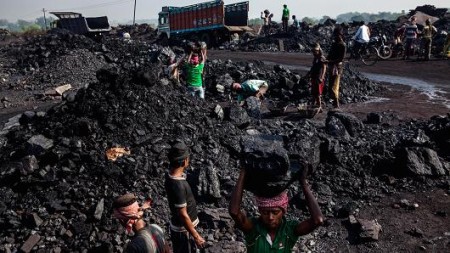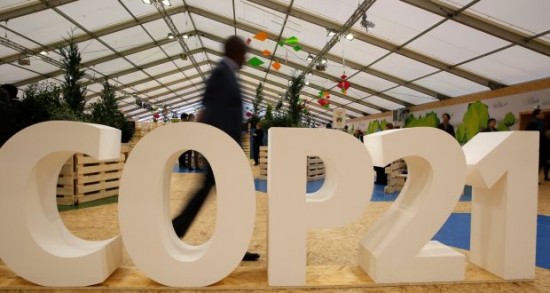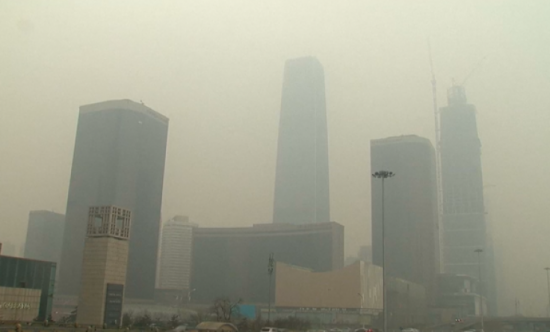December 11, 2015 – The climate talks in Paris will end on Saturday with some kind of international agreement. It will not bind any one nation to meeting carbon reduction targets but it will establish milestones with wording that will include commitments to not let warming exceed 2.0 Celsius (3.6 Fahrenheit) degrees by the end of the century. And I suspect that the 1.5 Celsius (2.7 Fahrenheit) limit demanded by the nations most vulnerable to climate change impacts will also be referenced as a desirable target.
In the middle of all of the negotiations, the American head of the Environmental Protection Agency (EPA) has been quoted stating “coal is no longer marketable.” The pictures of Beijing under red alert from coal-burning smog (see image below) reinforce Gina McCarthy’s view point. She continues “China has learned as well.” Of course what she is referring to is that the United States is weaning itself off coal-fired power plants with 2025 and 2030 targets for dramatic reductions, and that China, too, will need to make the same commitment.
Even India, a country that at the Paris conference indicated its plans to expand coal production and importation to 1.5 billion tons per year by 2020, so that it can burn it to provide energy to 300 million of its citizens currently without electricity, has made it known that for cash it will move to green, more expensive energy alternatives. Today India is the world’s third largest economy accounting for only 6% of global energy use. At its current rate of growth that demand will more than triple by mid-century. So cash would be most welcome. And where would it come from – Developed Nations, the original source of all that additional carbon in the atmosphere today.
India is not alone. The Philippines, to meet the demand of its emerging economy, needs the equivalent energy of 23 coal-fired power plants and wants to build them by 2020. The rest of Southeast Asia is in the same boat as these nations move from Developing to Developed. By 2040, 400 gigawatts of generation capacity will be needed to meet demand and, for the moment, coal looks like the best option with much of it coming from Indonesia and Australia.
In 2014 it was reported that for the first time half of the world’s new energy capacity was being delivered by renewable sources. That put renewables second to coal, a much cheaper form of energy for a Developing World that wants what the Developed World already has.
Yet at COP21, McCarthy sees the end of coal through an American lens. But does the United States and other Developed World nations accept the real cost of the end of coal, a significant transfer of wealth to the Developing World so they too can have coal-free energy.
Ajay Mathur, a member of India’s negotiating team at COP21, when asked about moving away from coal states, “It’s problematic for us to make that commitment at this point in time. It’s certainly a stumbling block…..The entire prosperity of the world has been built on cheap energy. And suddenly we are being forced into higher cost energy. That’s grossly unfair.”
For coal producers Mathur’s remakrs reflect reality while McCarthy’s comments seem utopian and unrealistic. Coal producers believe the fuel still provides an energy answer and point to carbon capture and sequestration (CCS) technology as equally appropriate for investment as solar, wind, wave and energy storage. But they have yet to walk the talk. Coal producers continue to be reluctant brides in investing in CCS. Why? Industry spokespeople argue that they fear governments will shut coal production down to combat climate change which means any sequestration investment they make will never be recouped.
When the text of the final agreement is released after COP21 closes on Saturday it will be interesting to find out just how much bend has occurred in positions of both Developed and Developing World nations in particular to coal and its future. One thing for sure, if Developing World nations proceed with their plans for coal-burning power plants, all bets are off in achieving even close to the 2 Celsius warming limit, let alone 1.5 by the end of this century. For the Developed World which perceives the Developing World position as economic blackmail, it would be better to see it for the potential economic opportunity it represents in building a low-carbon global future.


















